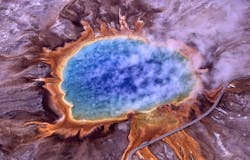Kathy Hannun is the inventor and engineer behind the renewable energy appliance provider, Dandelion Energy, which deals in underground, geothermal-sourced heating and cooling systems.
The Dandelion Energy geothermal platform is sleekly deployed 10 feet below a structure and significantly cuts cost and reliance on oil and traditional HVAC systems, as well as carbon emissions.
In February 2021, Dandelion Energy announced it had raised an additional $30 million with Bill Gates’ venture capital firm.
Having been featured on television shows such as "This Old House" and "Designing Spaces," Hannun also recently gave a TED Talk entitled, “How to Heat Your Home Without Warming the Planet."
SBT spoke with Hannun about geothermal energy prospects for residential and commercial uses in North America, as well as trends globally, as structures from schools to hospitals and residences including MDU/MTUs, and commercial buildings prepare for high heating and cooling costs in the face of climate change.
Here are excerpted highlights from SBT's podcast talk with Kathy Hannun.
SBT: Can you tell us about your background as it relates to the formation of Dandelion Energy?
KH: I'm trained as a civil engineering computer scientist and then got started in my career at Google. My role at Google sort of evolved over time, but it became to source new ideas for Google's Moonshot Factory, Google X, really looking for technologies that we could create that would really have a big impact and potentially lead to big business opportunities. Geothermal really captured my attention because I hadn't realized how much of the nation's energy usage really is from buildings -- it's incredibly high, and most of that is going towards heating and cooling.
SBT: What is the history of geothermal heat pump technology?
KH: It's been around in the US, at least since the 70s; there might be a few systems even predating the 70s, so for at least half a century there have been geothermal heat pumps going in in the US.
But some of the barriers to adoption included that there was no standardization at all, so every time somebody wanted to do a geothermal heat pump installation, it was kind of a system that needed to be custom-designed from scratch using highly specialized experts, and because of this, they have historically had a reputation of being very expensive.
But actually today they're less expensive than many fossil fuel options, so that has really changed in the last few years.
SBT: Does a geothermal system installed in a building work alongside traditional utilities to reduce costs, or is it 100% utilized for heating and cooling in deployment?
KH: It is 100% your system. One of the things that really captured my attention with this solution is that it's not just an add-on. It's not like something that augments your existing fossil system. It actually completely replaces it, so you only need your geothermal system, and you can provide all the heating, cooling and hot water that the building requires. You're able to transition all of that to renewable [energy].
But geothermal runs on electricity, so let me clarify this. You're basically using electricity to run the heat pump. But that electricity is being used to harvest renewable energy from the ground to bring it into the building, or going from the building, to put it into the ground and cooling mode. And so what this ends up meaning is that about 20% of the energy used is coming from electricity, and about 80% of the energy used is coming from the ground. So the majority 80% is renewable energy, but you still have 20% that's electrical.
So it's not that the solution replaces the need for electricity in a building. It does not; it is actually a way of electrifying heating and cooling, but doing so in a hyper-efficient way, that makes use of all of this renewable energy around the building.

